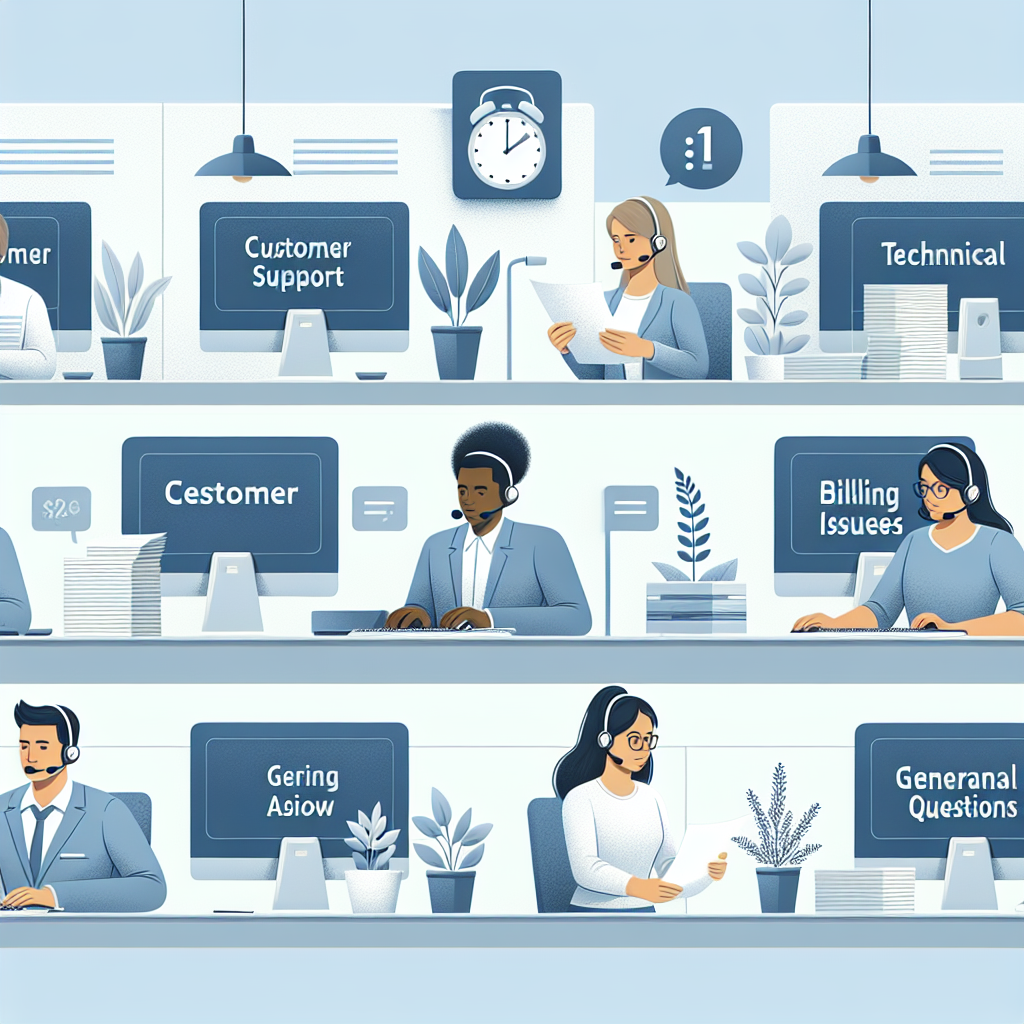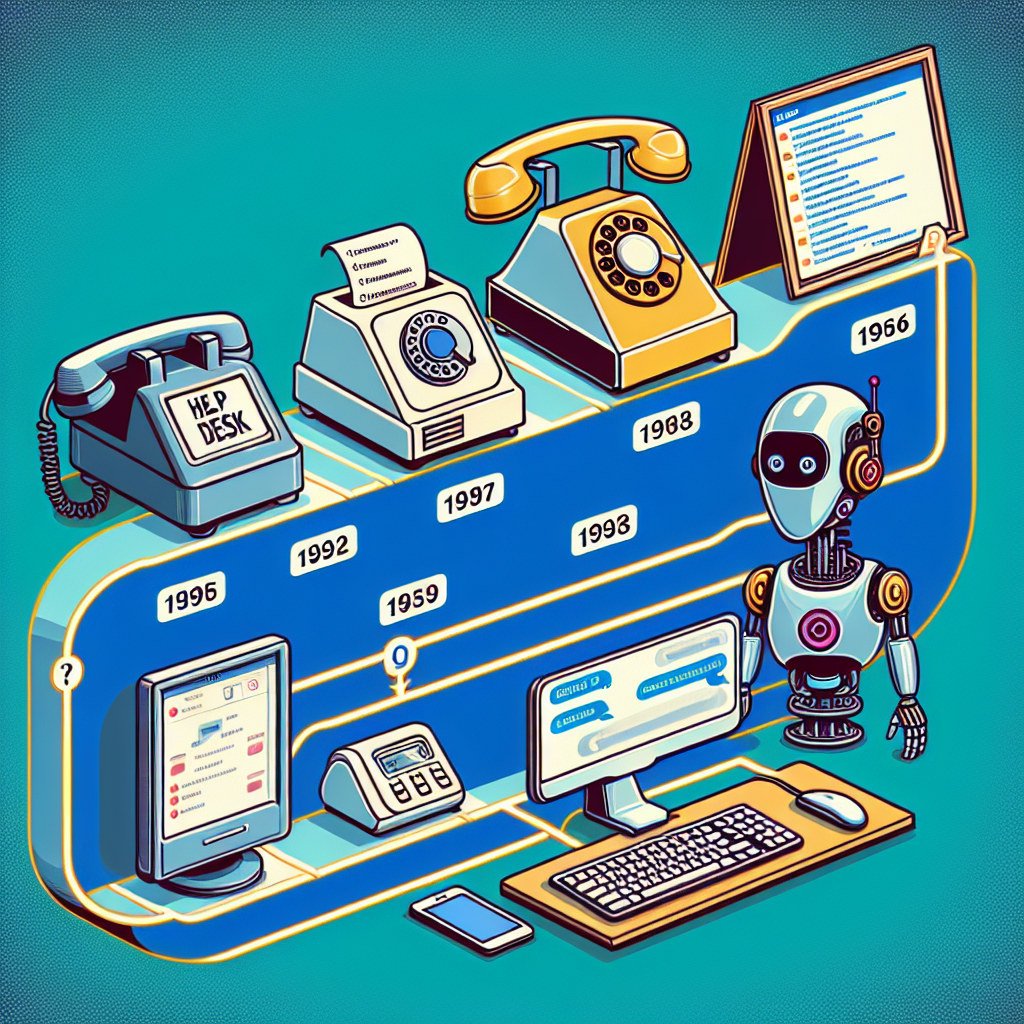Your cart is currently empty!
Tag: Desk

Why Outsourcing Your Help Desk Can Benefit Your Business
Outsourcing your help desk can be a game-changer for your business. By entrusting your customer support needs to a third-party provider, you can enjoy a range of benefits that will help you streamline operations, improve customer satisfaction, and boost overall efficiency.One of the key advantages of outsourcing your help desk is cost savings. By outsourcing, you can eliminate the need to hire and train in-house customer support staff, which can be a costly and time-consuming process. Instead, you can rely on a team of experienced professionals who are already equipped to handle customer inquiries and resolve issues efficiently.
Outsourcing your help desk can also provide you with access to a team of experts who are well-versed in the latest technology and best practices in customer support. This can help you provide a higher level of service to your customers, leading to increased satisfaction and loyalty.
Another benefit of outsourcing your help desk is scalability. As your business grows, you may find that your customer support needs change. By outsourcing, you can easily scale your support team up or down as needed, without the hassle of hiring and training new staff members.
Additionally, outsourcing your help desk can free up your internal team to focus on more strategic initiatives, such as product development or marketing. This can help you drive innovation and growth within your organization, while ensuring that your customers continue to receive the support they need.
Overall, outsourcing your help desk can be a smart move for businesses of all sizes. By leveraging the expertise of a third-party provider, you can save time and money, improve customer satisfaction, and drive overall business success. Consider outsourcing your help desk today and see the benefits for yourself.

5 Tips for Setting Up an Effective Help Desk
A help desk is an essential component of any business, providing support and assistance to customers and employees alike. Setting up an effective help desk can make a significant difference in the overall productivity and satisfaction of your users. Here are five tips to help you establish an efficient and successful help desk:1. Define your goals and objectives: Before setting up your help desk, it’s important to clearly define your goals and objectives. Determine what kind of support you want to provide, the level of service you aim to deliver, and the metrics you will use to measure success. Having a clear understanding of your goals will help you design a help desk that meets the needs of your users and aligns with the overall objectives of your business.
2. Choose the right tools and technology: The success of your help desk relies heavily on the tools and technology you use. Select a help desk software that is user-friendly, scalable, and offers features like ticket management, knowledge base, and reporting capabilities. Additionally, consider integrating your help desk with other systems such as CRM software, chatbots, and remote desktop tools to streamline support processes and improve efficiency.
3. Create a knowledge base: A knowledge base is a valuable resource that can help users find answers to common issues without having to contact support. Create a comprehensive knowledge base that includes FAQs, troubleshooting guides, and how-to articles to empower users to resolve issues on their own. Regularly update and maintain the knowledge base to ensure that it remains relevant and accurate.
4. Train your staff: Invest in training and development for your help desk staff to ensure they have the skills and knowledge needed to provide excellent support. Provide ongoing training on customer service best practices, technical skills, and product knowledge to help your staff deliver consistent and high-quality support to users. Encourage your team to collaborate and share knowledge to enhance their problem-solving abilities and improve overall efficiency.
5. Monitor and analyze performance: Regularly monitor and analyze the performance of your help desk to identify areas for improvement and make data-driven decisions. Track key metrics such as response time, resolution time, customer satisfaction, and ticket volume to assess the effectiveness of your help desk. Use this data to identify trends, address bottlenecks, and implement strategies to enhance the overall performance of your help desk.
Setting up an effective help desk requires careful planning, the right tools, and ongoing monitoring and analysis. By following these five tips, you can establish a help desk that provides efficient and reliable support to your users, ultimately improving customer satisfaction and driving business success.

How to Improve Customer Service with an Efficient Help Desk
In today’s competitive business landscape, providing exceptional customer service is more important than ever. One key component of delivering outstanding customer service is having an efficient help desk system in place. A help desk serves as the first point of contact for customers seeking assistance with products or services, and it plays a crucial role in ensuring that customer inquiries are addressed in a timely and effective manner. Here are some tips on how to improve customer service with an efficient help desk:1. Streamline communication channels: Make it easy for customers to reach out to your help desk by offering a variety of communication channels, such as phone, email, live chat, and social media. This will allow customers to choose the method that is most convenient for them, and it will help to ensure that their inquiries are addressed promptly.
2. Implement a ticketing system: A ticketing system can help to organize and prioritize customer inquiries, making it easier for help desk agents to manage and respond to them in a timely manner. By assigning tickets to specific agents and tracking their progress, you can ensure that no customer inquiry falls through the cracks.
3. Provide self-service options: Empower customers to find answers to their questions on their own by offering self-service options, such as a knowledge base or FAQ section on your website. This can help to reduce the number of inquiries that need to be handled by your help desk, freeing up agents to focus on more complex issues.
4. Offer training and support for help desk agents: Invest in training and support for your help desk agents to ensure that they have the skills and knowledge needed to provide excellent customer service. Provide ongoing coaching and feedback to help agents improve their performance and handle customer inquiries more efficiently.
5. Monitor and analyze performance metrics: Keep track of key performance metrics, such as response time, resolution time, and customer satisfaction ratings, to identify areas for improvement and measure the effectiveness of your help desk system. Use this data to make informed decisions and implement changes that will enhance the customer service experience.
By implementing these tips, you can improve customer service with an efficient help desk system that meets the needs of your customers and helps to build strong relationships with them. Remember that providing exceptional customer service is a continuous process, so be proactive in seeking feedback from customers and making adjustments to your help desk system as needed. With a well-functioning help desk in place, you can set your business apart from the competition and earn the loyalty of your customers.

The Importance of a Reliable Help Desk for Your Business
In today’s fast-paced and competitive business environment, having a reliable help desk is essential for ensuring the smooth operation of your business. A help desk is a vital resource for providing technical support and assistance to customers and employees, and can make a huge difference in the overall success of your business.One of the key reasons why a reliable help desk is important for your business is that it can help you quickly resolve any technical issues that arise. Whether it’s a customer having trouble accessing your website, an employee experiencing computer issues, or any other technical problem, a help desk can provide the necessary support to address the issue efficiently and effectively. This can help minimize downtime, ensure that your operations run smoothly, and ultimately improve customer satisfaction.
In addition, a reliable help desk can also help you improve your overall customer service. By providing timely and effective support to your customers, you can build trust and loyalty, which can lead to repeat business and positive word-of-mouth referrals. A well-managed help desk can help you manage customer inquiries, complaints, and feedback in a professional and efficient manner, ultimately enhancing your reputation and brand image.
Furthermore, a help desk can also help you identify and address underlying technical issues that could be affecting your business. By tracking and analyzing customer support requests and feedback, you can gain valuable insights into areas where your business may be falling short and take steps to address these issues. This proactive approach can help you improve your products and services, streamline your operations, and ultimately drive business growth.
Overall, a reliable help desk is a crucial component of any successful business. By providing timely and effective technical support to your customers and employees, you can enhance customer satisfaction, improve your reputation, and drive business growth. Investing in a reliable help desk is an investment in the success and sustainability of your business.

Why Every Business Needs a Help Desk and How to Build One
In today’s fast-paced business world, customer service is more important than ever. With so many options available to consumers, businesses must go above and beyond to provide exceptional customer support. One way to do this is by implementing a help desk system.A help desk is a centralized resource that customers can contact for assistance with any issues they may have. It serves as a single point of contact for all customer inquiries, complaints, and technical support needs. Having a help desk in place can greatly improve customer satisfaction and loyalty, as well as streamline communication between customers and your business.
So why does every business need a help desk? Here are a few reasons:
1. Improved customer satisfaction: By providing a dedicated resource for customer support, you can ensure that all inquiries are addressed in a timely and efficient manner. This can help to build trust and loyalty among your customer base.
2. Increased efficiency: A help desk can help to streamline the process of handling customer inquiries, allowing your team to work more efficiently and effectively.
3. Better tracking and reporting: A help desk system can provide valuable insights into customer issues and trends, allowing you to identify areas for improvement and make data-driven decisions.
4. Enhanced communication: With a help desk in place, customers can easily reach out for assistance via phone, email, or live chat, ensuring that their needs are met in a timely manner.
Now that you understand the importance of having a help desk, how can you go about building one for your business? Here are a few steps to get you started:
1. Choose the right software: There are many help desk software options available, so be sure to choose one that meets the needs of your business and your customers. Look for features such as ticket management, reporting, and integrations with other tools.
2. Train your team: Once you have your help desk system in place, be sure to train your team on how to use it effectively. This includes understanding how to prioritize and respond to customer inquiries, as well as how to use the software to track and report on customer issues.
3. Set up clear processes: Establish clear processes for handling customer inquiries, including how tickets are assigned, escalated, and resolved. This will help to ensure that all customer inquiries are addressed in a consistent and efficient manner.
4. Monitor and improve: Regularly monitor the performance of your help desk system and make adjustments as needed. Pay attention to customer feedback and use it to make improvements to your help desk processes.
In conclusion, every business can benefit from having a help desk in place. By providing a centralized resource for customer support, businesses can improve customer satisfaction, increase efficiency, and enhance communication. By following the steps outlined above, you can build a help desk system that meets the needs of your business and your customers.

The Evolution of Help Desk Support: From Phone Calls to Chatbots
As technology continues to advance at a rapid pace, the way businesses provide customer support has also evolved. One of the most significant changes in recent years has been the shift from traditional phone-based help desk support to more modern solutions, such as chatbots.In the past, when customers had a question or issue with a product or service, they would typically call a support hotline and speak with a live agent. While this method was effective in providing personalized assistance, it often led to long wait times and frustration for customers.
To address these issues, many companies began implementing online chat support systems, allowing customers to communicate with agents in real-time through a chat window on their website. This provided a more convenient and efficient way for customers to get the help they needed, without having to wait on hold or navigate through a complex phone menu.
However, even chat support systems have their limitations. They require human agents to be available to respond to customer inquiries, which can be costly and time-consuming for businesses. This is where chatbots come into play.
Chatbots are software programs that use artificial intelligence to interact with customers and provide automated responses to their questions. They can be integrated into websites, messaging apps, and social media platforms, allowing businesses to provide 24/7 support without the need for human intervention.
Chatbots have revolutionized the way companies provide customer support by offering instant responses, personalized recommendations, and quick solutions to common problems. They can handle a wide range of inquiries, from simple troubleshooting to complex technical issues, all while providing a seamless and efficient user experience.
In addition to improving customer satisfaction, chatbots also offer several benefits for businesses. They can help reduce support costs, increase productivity, and streamline the customer service process. By automating repetitive tasks and handling routine inquiries, chatbots free up human agents to focus on more complex issues and provide higher-level support.
As technology continues to advance, the role of chatbots in customer support is only expected to grow. With advancements in natural language processing and machine learning, chatbots are becoming increasingly sophisticated and capable of handling more complex interactions.
The evolution of help desk support from phone calls to chatbots represents a shift towards a more efficient and customer-centric approach to customer service. By embracing this technology, businesses can provide faster, more personalized support to their customers, ultimately improving satisfaction and loyalty. So, if you haven’t already, it may be time to consider integrating chatbots into your customer support strategy.

Why Every Business Needs a Help Desk and How to Get Started
In today’s fast-paced business world, customer service is more important than ever. With the rise of online shopping and social media, customers have higher expectations when it comes to the level of service they receive. This is where a help desk can make all the difference for your business.A help desk is a centralized hub where customers can go to get assistance with any issues they may be experiencing. Whether it’s a technical problem with a product or a question about a service, a help desk provides a single point of contact for customers to get the help they need.
There are several reasons why every business needs a help desk. Firstly, a help desk can improve customer satisfaction. By providing a dedicated channel for customers to get assistance, you can ensure that their issues are addressed promptly and effectively. This can lead to happier customers who are more likely to recommend your business to others.
Secondly, a help desk can help streamline your customer service operations. With a help desk in place, you can track and manage customer inquiries more efficiently, ensuring that no issue falls through the cracks. This can help you provide a more consistent level of service to your customers, regardless of how busy your business may be.
Finally, a help desk can provide valuable insights into your customers’ needs and preferences. By tracking the types of inquiries that come in, you can identify common pain points and areas for improvement in your products or services. This can help you make informed decisions to better serve your customers and stay ahead of the competition.
If you’re convinced that your business could benefit from a help desk, getting started is easier than you may think. There are several help desk software options available that can help you set up and manage your help desk efficiently. Many of these software solutions offer features such as ticketing systems, knowledge bases, and reporting tools to help you provide top-notch customer service.
To get started with a help desk, you’ll first need to choose a help desk software that aligns with your business needs and budget. Once you’ve selected a software solution, you can set up your help desk by customizing it to match your branding and configuring it to meet your customer service requirements.
Next, you’ll need to train your customer service team on how to use the help desk software effectively. This may involve providing them with training materials and resources, as well as ongoing support to ensure they can handle customer inquiries efficiently.
Finally, you’ll need to promote your help desk to your customers. Make sure they are aware of the new channel for getting assistance and encourage them to use it whenever they have a question or issue. You may also want to consider integrating your help desk with other customer service channels, such as social media or live chat, to provide a seamless experience for your customers.
In conclusion, a help desk can be a valuable asset for any business looking to improve customer service and streamline operations. By implementing a help desk and following these steps to get started, you can enhance your customer service efforts and build stronger relationships with your customers.

Best Practices for Training Help Desk Staff
Training help desk staff is a crucial component of any successful customer service operation. When your help desk staff are well-trained and equipped to handle a wide range of customer inquiries and issues, your customers are more likely to have a positive experience with your company. In this article, we will discuss some best practices for training help desk staff to ensure they are prepared to provide top-notch customer service.1. Comprehensive training materials: When training help desk staff, it is important to provide them with comprehensive training materials that cover all aspects of their job responsibilities. This should include information on your company’s products and services, common customer inquiries and issues, troubleshooting procedures, and best practices for providing excellent customer service. By providing your help desk staff with a solid foundation of knowledge, they will be better equipped to assist customers effectively.
2. Role-playing exercises: Role-playing exercises can be a valuable tool for training help desk staff. By simulating real-life customer interactions, help desk staff can practice their communication skills, problem-solving abilities, and conflict resolution techniques in a controlled environment. Role-playing exercises can help boost confidence and prepare help desk staff for a variety of customer scenarios they may encounter on the job.
3. Ongoing training and development: Training should not be a one-time event for help desk staff. To ensure that they are consistently improving their skills and knowledge, it is important to provide ongoing training and development opportunities. This can include regular refresher courses, workshops on new products or services, and opportunities for help desk staff to shadow more experienced team members. By investing in the professional development of your help desk staff, you can ensure they are equipped to handle the evolving needs of your customers.
4. Encourage feedback and communication: Communication is key in any customer service role, and this is especially true for help desk staff. Encourage open communication between help desk staff and their managers, as well as with customers. By creating a culture of feedback and transparency, help desk staff can learn from their experiences and continuously improve their performance. Regularly soliciting feedback from customers can also provide valuable insights into areas for improvement in the training and development of help desk staff.
5. Provide resources and support: In addition to training, it is important to provide help desk staff with the resources and support they need to succeed. This can include access to a knowledge base, FAQs, and troubleshooting guides, as well as technical support from more experienced team members. By equipping help desk staff with the tools they need to do their job effectively, you can help them provide better customer service and enhance the overall customer experience.
In conclusion, training help desk staff is essential for delivering exceptional customer service. By implementing best practices such as comprehensive training materials, role-playing exercises, ongoing training and development, encouraging feedback and communication, and providing resources and support, you can ensure that your help desk staff are well-prepared to handle customer inquiries and issues with professionalism and efficiency. Investing in the training and development of your help desk staff is an investment in the success of your customer service operation.

The Top Help Desk Software Solutions for Your Business
In today’s fast-paced business environment, it’s crucial for companies to have effective help desk software solutions in place to support their customers and employees. Help desk software allows businesses to streamline their customer support processes, improve response times, and enhance overall customer satisfaction.With so many help desk software options available in the market, it can be overwhelming to choose the right solution for your business. To help you make an informed decision, we’ve compiled a list of the top help desk software solutions that are trusted by businesses of all sizes.
1. Zendesk: Zendesk is a popular help desk software solution that offers a wide range of features, including ticket management, live chat support, and knowledge base management. With Zendesk, businesses can easily track customer issues, prioritize tasks, and collaborate with team members to resolve problems quickly and efficiently.
2. Freshdesk: Freshdesk is another leading help desk software solution that is known for its user-friendly interface and robust features. With Freshdesk, businesses can automate ticket routing, set up SLA policies, and analyze customer feedback to improve their support processes. Freshdesk also offers integration with popular third-party tools, such as CRM systems and social media platforms.
3. Intercom: Intercom is a customer messaging platform that offers a help desk software solution to support businesses in managing customer inquiries across multiple channels, including email, chat, and social media. With Intercom, businesses can create personalized responses, track customer interactions, and provide proactive support to their customers.
4. Jira Service Management: Jira Service Management is a help desk software solution that is designed for IT teams to manage incidents, problems, and changes effectively. With Jira Service Management, businesses can centralize their IT support operations, automate repetitive tasks, and improve collaboration between different teams within the organization.
5. HubSpot Service Hub: HubSpot Service Hub is a comprehensive help desk software solution that is part of the popular HubSpot CRM platform. With HubSpot Service Hub, businesses can manage customer inquiries, create knowledge base articles, and track customer satisfaction metrics. HubSpot Service Hub also offers integration with other HubSpot tools, such as marketing automation and sales CRM.
In conclusion, investing in a reliable help desk software solution is essential for businesses to deliver exceptional customer support and streamline their internal operations. The top help desk software solutions mentioned above offer a range of features and benefits to help businesses of all sizes improve their support processes and enhance customer satisfaction. Consider evaluating these solutions to find the one that best fits your business needs and budget.

